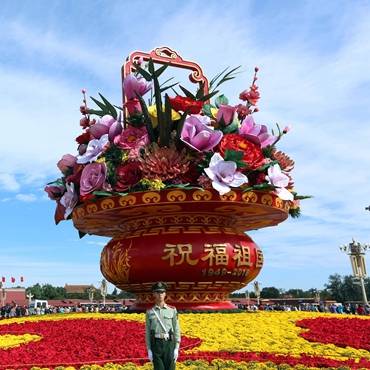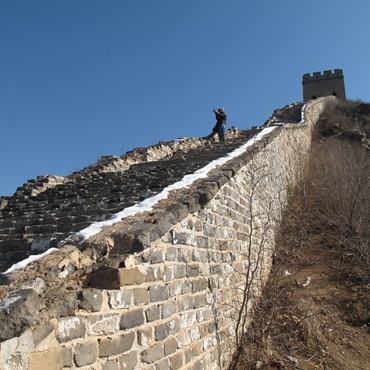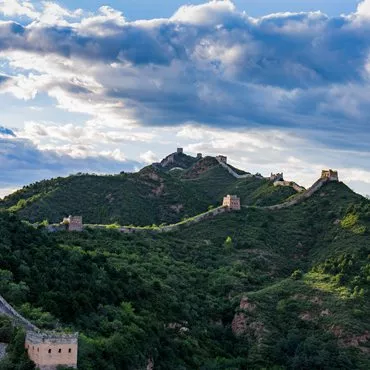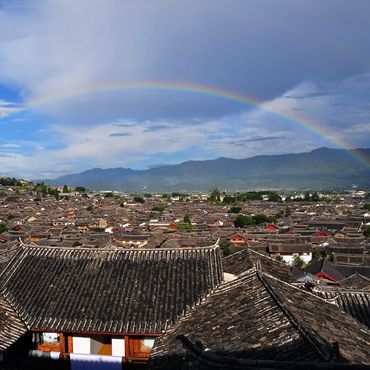Tianning Temple Pagoda
Tianning Temple Pagoda is an octagonal, thirteen-story brick pagoda with densely layered eaves, standing at a majestic height of 57.8 meters. Its slender and graceful silhouette epitomizes the advanced architectural artistry of the Liao Dynasty. The structure ascends from bottom to top: base, platform, upturned lotus pedestal, pagoda body, thirteen-tiered eaves, pagoda top, jewel, and spire. Built on a square brick platform, the pagoda is adorned with intricate architectural elements that reflect its historical and cultural significance.
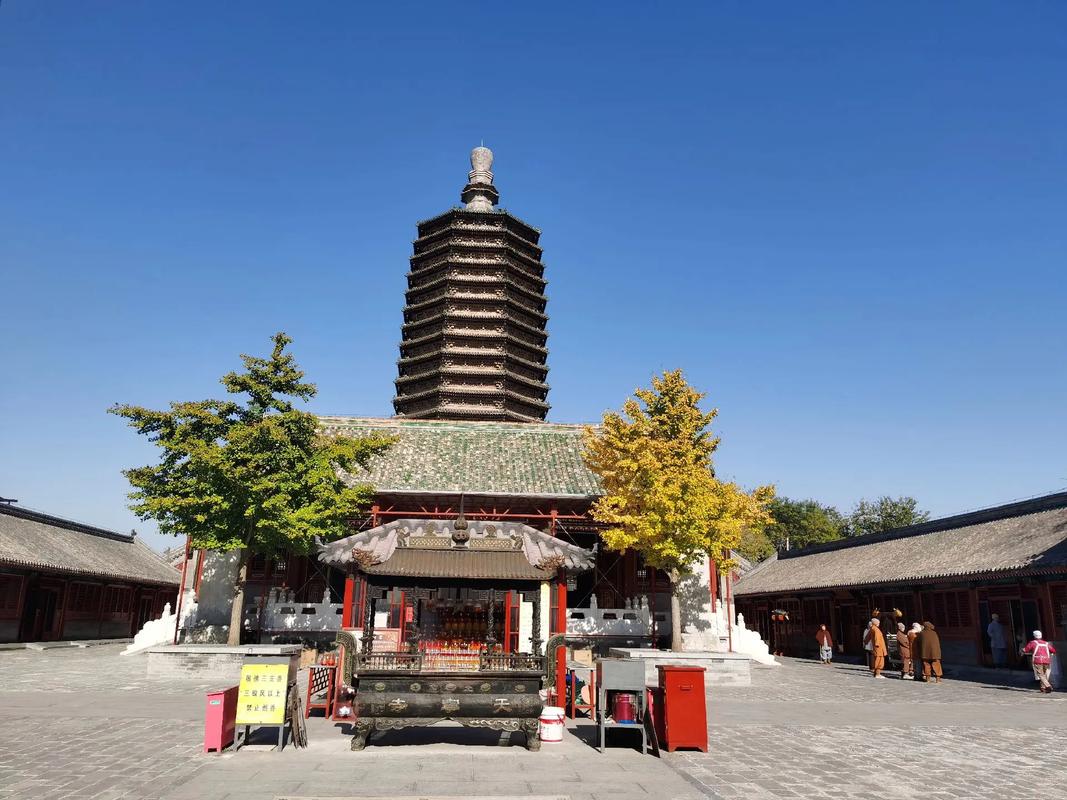
Base
The base is octagonal, adorned with mythical beast heads on its waist and niches separated by short columns, each intricately carved with lion heads and entwined lotus motifs. Carved figures of Vajra warriors adorn the corners, showcasing exquisite craftsmanship. Above the base lies the platform section, featuring arches and rafters resembling woodwork, intricately carved with motifs of entwined lotus and auspicious flowers. Three layers of upturned lotus petals support the pagoda body, each meticulously crafted to enhance its visual appeal.
Pagoda Body
The pagoda body, also octagonal, features hidden archways and rectangular windows on each face, embellished with reliefs of Vajra warriors, Bodhisattvas, and celestial guardians. Brick columns at the corners are adorned with ascending and descending dragons. The thirteen layers of eaves cascade gracefully, each layer adorned with double-tiered brick arches mimicking wooden structures. As the eaves rise, the width gradually diminishes, creating a gentle, flowing silhouette characteristic of Liao and Jin architectural styles.
Eaves
The thirteen-tiered eaves are intricately designed with double-tiered brick arches resembling wood structures. Each tier diminishes in width as it ascends, creating a dynamic and powerful profile. Wooden beams at the corners of each eave support glazed roof tiles and ornamental figures made of colored glass, adding a touch of elegance and grandeur.
Pagoda Top and Spire
At the top, two layers of upturned lotus petals support a small Vajra pedestal crowned with a jewel. The spire, a symbol of Buddhist architecture, traditionally adorned with multiple layers resembling parasols, here culminates in a jewel, maintaining the pagoda's symbolic significance while showcasing its unique architectural form.
Cultural Heritage
Tianning Temple, founded by Emperor Xiaowen of Northern Wei (471-475 AD) as Guanglin Monastery, was renamed Tianwang Monastery during the Tang Dynasty. In the ninth year of the Tianqing period of the Liao Dynasty (1119 AD), the current pagoda, a brick octagonal relic stupa, was added behind the monastery. Over centuries, the temple underwent renovations and reconstructions during the Ming and Qing Dynasties, reaffirming its cultural and historical importance.
Historical Significance
Tianning Temple Pagoda stands as a testament to the architectural prowess of the Khitan people (ancestors of the Manchu), who, alongside Han craftsmen, contributed significantly to the building's design and construction. Its distinctive single-layered eaves are a rarity found primarily in Hebei Province and northeastern China, dating back to the Liao and Jin Dynasties (11th to 13th century). Despite the passage of over nine centuries, the pagoda remains a pristine architectural marvel, offering invaluable insights into ancient Chinese pagoda design.
Artistic Value
The pagoda's intricate carvings and architectural style exemplify the artistry of Liao Dynasty brick pagodas, serving as a pivotal example for the study of ancient Chinese pagodas. Its preservation over centuries underscores its status as one of Beijing's most precious cultural treasures. Today, Tianning Temple Pagoda stands not only as a monument to Buddhist architecture but also as a testament to the enduring craftsmanship of its creators.
All in all, Tianning Temple Pagoda is more than just a historical relic; it is a living testament to the rich cultural exchange and architectural innovation that defined ancient China. Its graceful form and intricate details continue to captivate visitors, offering a glimpse into a bygone era of spiritual devotion and architectural splendor.

